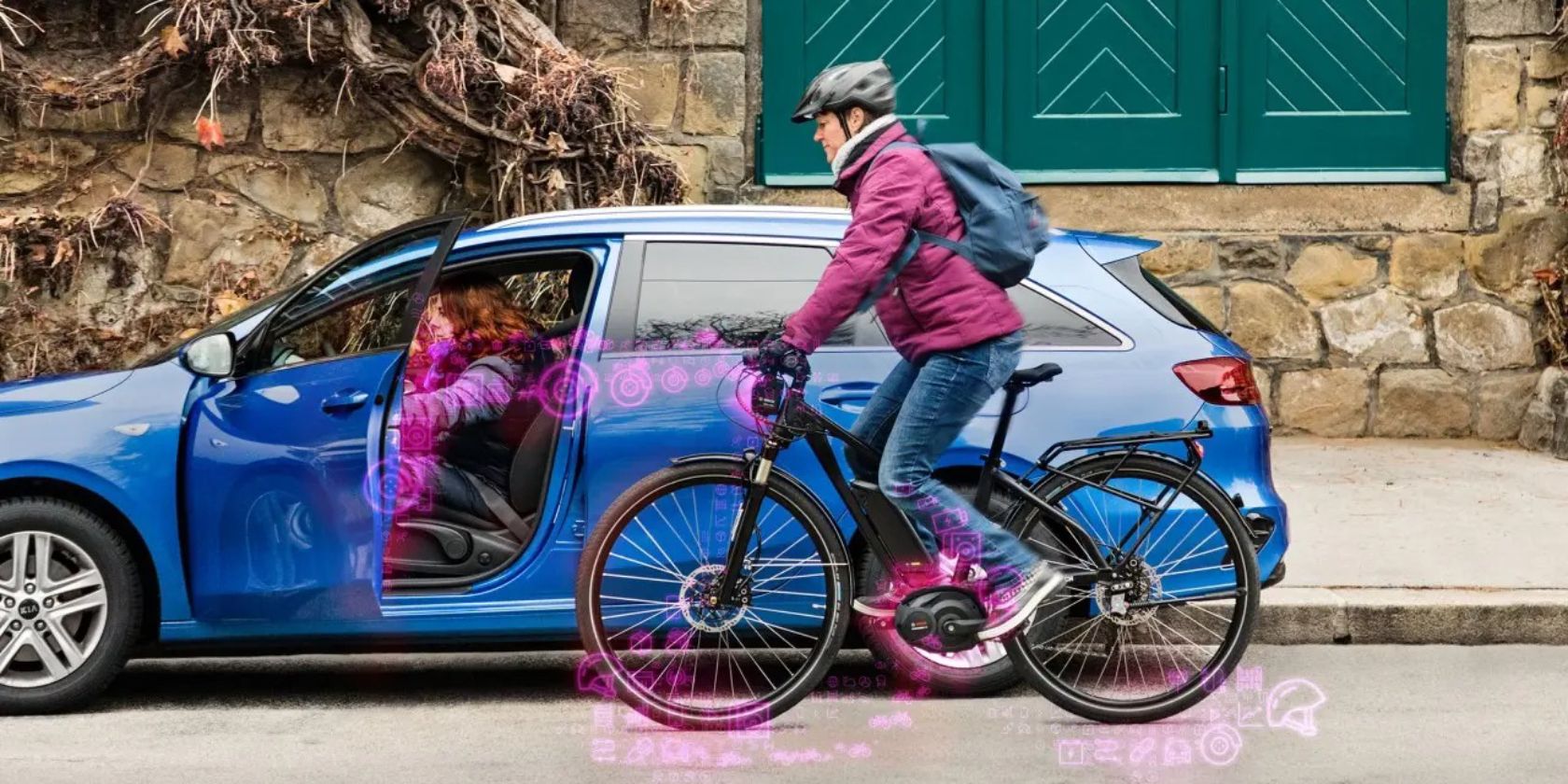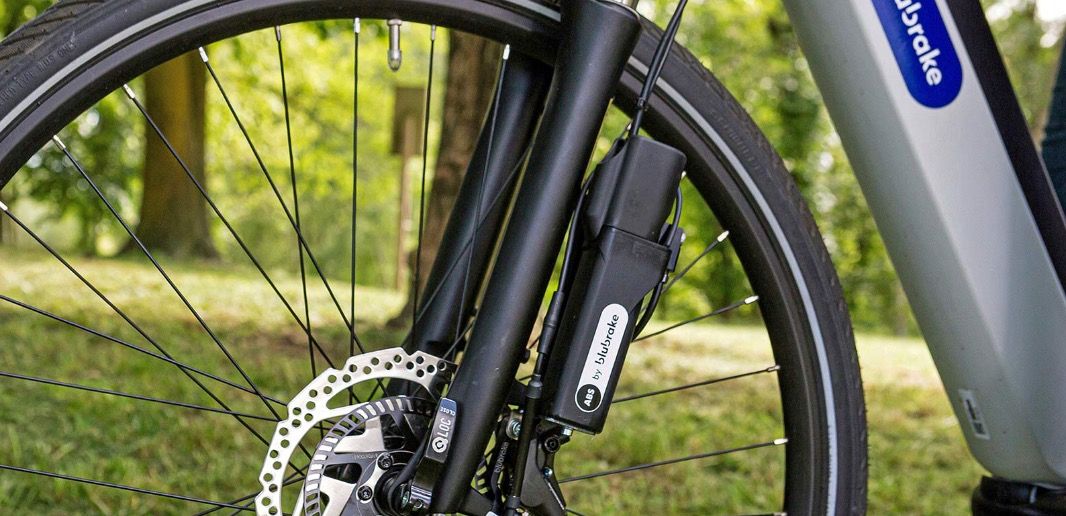If you've been e-biking for any length of time, you've probably had some sketchy braking situations. For instance, maybe you braked in a corner and washed out your front tire. Hopefully, you avoided any damage and learned a valuable lesson about speed and the dangers of emergency braking.
When riding an e-bike, braking at the right times and with the right modulation is critical, given how easy it is to lose traction.
So, what is ABS braking on e-bikes, and how does it enable riders to control their bicycles safely in emergencies?
What Is ABS Braking?
Invented by Mario Palazzetti in 1971 for use in automobiles, the Antilock Braking System (ABS for short) is a braking technology that prevents tires from locking during emergency braking.
While the technology may be old, it is installed on every new car that rolls off an assembly line. According to a U.S. Department of Transportation study of accidents between 1995 and 2007, ABS was estimated to have reduced non-fatal accidents by six percent in cars.
ABS braking has been around for e-bikes since 2018 and continues to gain popularity.
How Does ABS Work on an E-Bike?
When you pull your e-bike's brake lever, kinetic energy (the energy of your bike moving at velocity) converts into heat. You can see this in how brake rotors and pads in cars can glow orange during races or extended braking periods.
Once all the kinetic energy is converted into heat, the bike will come to a stop. In optimal conditions, this happens over an extended period as you apply the brakes gradually (unless you're trying to skid, which is not great for your tires or trails).
In emergency situations, such as when you're traveling faster than your skills can support, it's easy to grab a fistful of brake and apply a lot of pressure quickly. Unfortunately, the resulting stopping force applied to the disc brakes causes them to "lock," and locking prevents the conversion of kinetic energy to heat through the brakes.
Therefore, kinetic energy is not converted in the brakes but rather in the contact between the tire and the ground, often resulting in the loss of traction. Because rolling wheels are grippy wheels, when your bike begins to slip, you are less able to maneuver the bike, which makes tire locking extremely dangerous.
To solve this problem in cars, automobiles come equipped with ABS. The ABS technology ensures wheels continue to spin even in emergencies. Even when a panicked person slams on the brakes, ABS allows the driver to maintain control of the vehicle.
Benefits and Features
There are a lot of fast e-bikes on the market. As an e-biker, to understand proper stopping distance, you must do a lot of mental arithmetic, often with lightning speed. After all, stopping distance is a product of many things: tires, suspension, brake power, ground surface, weight distribution, load, and speed. This is especially true for e-mountain bikers who ride hard on uneven surfaces through obstacles at high speed.
Even for e-bikers with advanced skills, it's difficult to calculate the optimal stopping distance and brake pressure needed to maintain speed and grip, especially when going into a corner or when riding on slippery surfaces such as a wet road, icy pavement, or a sidewalk covered in damp fall leaves.
On e-bikes, wheel speed sensors on both wheels can detect when the brakes lock up. ABS adjusts the braking force automatically using software, which allows the wheels to slow down in high-speed intervals, reducing the risk of washing out or being thrown over the handlebars, which can happen if you slam on the front brake.
The Bosch's e-bike ABS for e-bikes offers the ability to change modes, which will adapt the braking dynamics to the riding you do—from carrying heavy loads on a cargo bike to touring to road riding to e-mountain biking. For example, using the trail mode, the ABS can adapt to the expectations of advanced riders on more challenging terrain. Bosch's ABS is currently available in all European Union countries, the United Kingdom, Switzerland, and Norway, and it will be available in the U.S. market in 2023.
Another popular e-bike ABS is Shimano ABS by Blubrake, which performs the same functions as the Bosch system: it prevents wheels from locking up and works on the road and off. The primary difference between the two systems is that the Shimano system can be retrofitted, whereas the Bosch system comes installed from the factory. Not only has Blubrake ABS been designed to work with every e-bike motor, brake, and battery type, but it is also the only ABS for e-bikes that can be installed inside the bike's frame, making it invisible.
How Much Does E-Bike ABS Cost?
Bosch's ABS comes installed from the factory, so you'll have to wait until you upgrade your e-bike to take advantage of this system. A limited number of e-bike brands currently offer Bosch ABS, including Advanced, Bianchi, and Benno, to name a few. However, you can expect Bosch's ABS to add about $500 to the overall cost of an e-bike.
Blubrake's ABS is offered on new bikes from brands such as Stromer, Opium, and Bianchi. However, Shimano has not yet released pricing or availability for the Blubrake retrofit system.
Is E-Bike ABS Braking for You?
ABS braking on e-bikes may be in the early stages, but the product development journey has likely just begun. As the systems become smaller, easier to retrofit and install, and cheaper, you can expect to see ABS braking on more and more e-bikes.
As more and more people transition from driving to riding e-bikes, ABS will add to the appeal by making the experience safer and, in the case of e-mountain biking, simply more fun.
So if you're in the market for a new e-bike, there's no reason not to take advantage of the latest e-bike tech. With ABS braking for e-bikes, you'll improve your traction and be able to ride more safely and confidently. Eventually, this tech may come stock on all e-bikes, just like automobiles.


